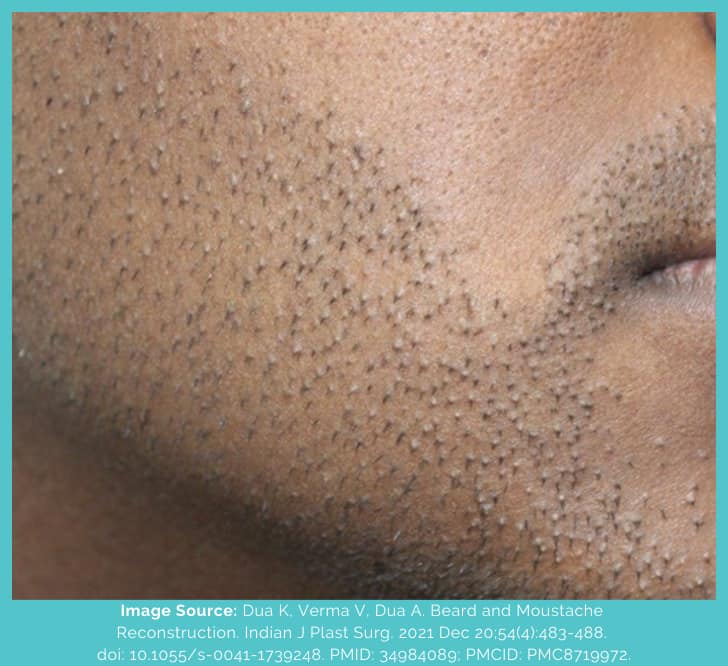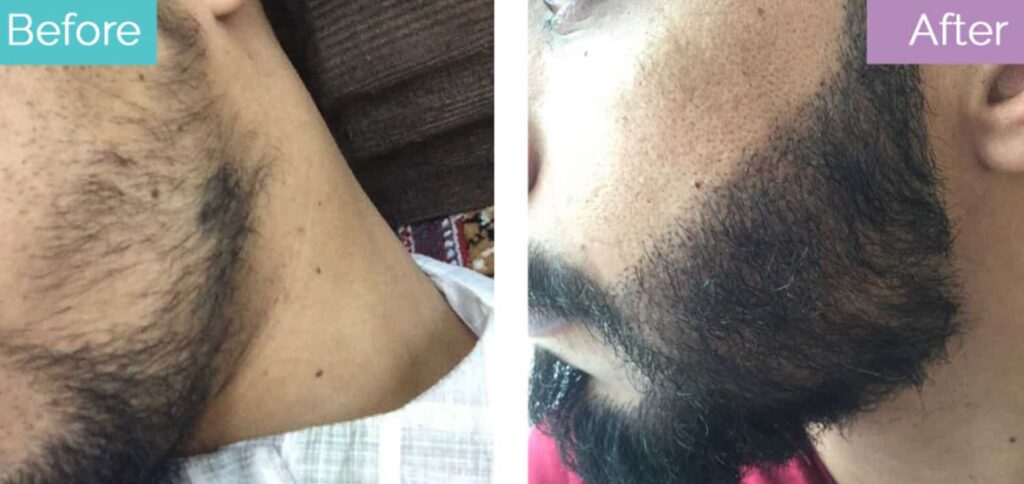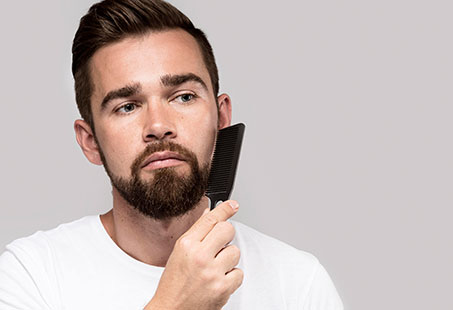Over the years, beard transplants have become increasingly popular. According to the International Society of Hair Restoration Surgery (ISHRS), it was the second-most popular hair transplant procedure among. However, not everyone seeking this surgery is getting it for the first time.
Having a beard transplant surgery doesn’t guarantee that you’ll grow normal hair. There are different factors that can affect the overall results of your surgery, resulting in a “beard transplant gone wrong” scenario.
Unfortunately, this can happen due to a poor choice of surgeon or even negligence in aftercare, among other reasons, just like a hair transplant gone wrong. But depending on your situation and the severity of the problem, it may be possible to fix your surgery.
But it would be even better to look out for any red flags in your clinic or doctor to reduce the risk of such a problem. In this guide, you’ll learn more about beard transplants gone wrong, why they happen, what are the signs, and how you can prevent them.
Can Beard Transplants Go Wrong?
In general, beard transplants are considered safe and effective. However, because it’s still a surgery, it carries the risk of some postoperative complications that can harm the results.
According to a study published in the Indian Journal of Plastic Surgery, you may experience the following complications:
- Bumpy, irregular skin
- Hair grafts growing at an unnatural angle
- Cobblestoning (abnormal elevation of hair grafts from the skin)

There are some other side effects of the surgery as well, such as redness, swelling, irritation, scabbing, etc., that should get better with time.
But in the case of serious complications, the implants themselves might be affected. And it might not just affect the overall density (leaving bald patches), but it may also permanently impact the skin of your face.
Why Do Beard Transplants Go Wrong?
There are different reasons why this can happen, so let’s take a closer look at each:
Inexperienced Surgeon
Because of the high demand for beard transplants, some inexperienced surgeons (who’re not always surgeons, but we’ll get into this shortly) have also started to perform this procedure.
There’s a lot of variation in the distribution of hair grafts in a naturally growing beard. Their angles and direction can also change depending on the area on the face, whether it’s the cheek, chin, or moustache. If a surgeon doesn’t replicate these things, your beard is going to end up looking unnatural.
For instance, simply the angle of placement is extremely important in getting good results. According to a research published in the Hair Transplant Forum International, the exit angle of beard hair widely varies. Within just 1 square centimetre of an area, there can be a “dozen or more” changes in the direction of hair growth.
There are certain “black market hair clinics” where this surgery is being performed without the supervision of an actual surgeon. So, before you make a decision, do your research to make the right choice.
Poor Candidate
This is related to the surgeon being inexperienced because they might not know if you’ll be a good candidate.
To be able to have this surgery, you need to have a healthy “donor area.” It refers to the area from where hair will be extracted for transplantation into the beard region.
This is usually the back and/or sides of the scalp. However, sometimes, surgeons also take hair from below the jawline since its texture is more similar to that of a beard.
But it depends on the number of grafts you need. For example, if you need a lot (could be around 2,500), the jawline alone might not yield enough grafts.
On the other hand, if you have a weak and low density donor area, and your surgeon overpromises high density, they might end up extracting too many grafts from your scalp (or elsewhere).
That can leave you with permanent bald patches there. And that’s another case of a faulty beard transplant.
Negligence In Aftercare
Not following the aftercare instructions can also lead you to developing certain post-op complications that can affect the overall results.
This can include exposure to dust (e.g. at the workplace) or sweating (e.g. exercising or staying out in the sun for too long).
Touching your face too much or trying to get the scabs off with nails is also not a good idea, as it might cause an infection.
Unrealistic Expectations
Before you have a beard transplant, you should have a very clear idea of what you can achieve. As mentioned above, some people don’t have a healthy enough donor area.
However, it might be enough for you to have this surgery. But it might not necessarily give you a high density. If you’re unaware of this eventuality, you might end up thinking that your beard transplant was botched.
What Are The Signs Of A Beard Transplant Gone Wrong?
The following might be the signs of a beard transplant gone wrong:
- Bad scarring on the face and donor areas
- Uneven skin
- Severe acne on the face
- Inflamed hair follicles
- Hair grafts sticking out of the face
- Necrosis (skin death)
- Overly defined boundaries of the beard (it can also look unnaturally straight)
- Infection
What Problems Can There Be In Beard Transplantation?
If you don’t have an experienced surgeon, there’s a lot that can go wrong in a beard transplantation. This may include:
- Improper assessment as a candidate
- Overharvesting hair grafts
- Implanting grafts with too many hairs in the wrong areas
- Not angling the hair graft correctly during placement
A lot of the beard transplant gone wrong stories feature beards that simply look extremely fake, and it may be simply because of poor technique.
As mentioned above, even the angle of hair grafts needs to be well-adjusted to make sure they grow out normally. However, before that, the surgeon also needs to be careful about choosing the correct grafts to place in different regions of the beard.
For instance, according to a study published in the International Journal of Trichology, over the cheeks, it’s better to use grafts with 2-3 hairs (grafts can have anywhere between 1-4 hairs). For the chin, 1-2 hair-containing grafts are better.
As far as the upper/superior border of the beard is concerned, according to another study published in the Hair Transplant Forum International, single-hair grafts are better there.
These nuances might not be understood by someone who’s not trained or experienced in these surgeries. So, no matter where you’re getting a beard transplant, make sure that your surgeon has the licence to practise legally and actually knows what they’re doing.
Can Beard Transplantation Cause An Infection?
Infections are an inherent risk of hair transplants, but they don’t occur too commonly. Still, depending on how and where your surgery took place, your health and whether or not you followed aftercare, you may develop an infection.
A few signs of infection include:
- Oozing pus
- Pain
- Swelling
- Bleeding
- Redness
- Itchiness
- Warmth
- Fever
If you notice any of these symptoms, make sure to get in touch with your surgeon as soon as possible.
How To Fix Faulty Beard Transplant?
In the case of a bad beard transplant, you might be able to fix some of the damage with a revision surgery. Understandably, because of your previous experience, you might feel hesitant to do so.
But depending on the severity of your condition and provided you find a good surgeon, it may be possible to redo the surgery for proper graft placement and beard hair growth.

Conclusion
No one wants to end up an ugly beard transplant. Although unfortunately, some people find themselves stuck in this situation.
While any surgery carries certain risks, you can try to get a good result (as many people have) by finding a qualified and experienced surgeon. For this, you must check out their reviews and go through their before and after photos to see how the results look.
If, at any point, you don’t get a good “feeling” from the clinic or their behaviour seems suspect, it’s better to start looking elsewhere.
Beard hair transplants in Turkey get a bad rap for being botched. But this is definitely not everyone’s experience, and you can end up with a bad beard transplant no matter where you are. So, just be careful and do your research.
Reviewed and Approved by Trichologist Yaprak Yazan


